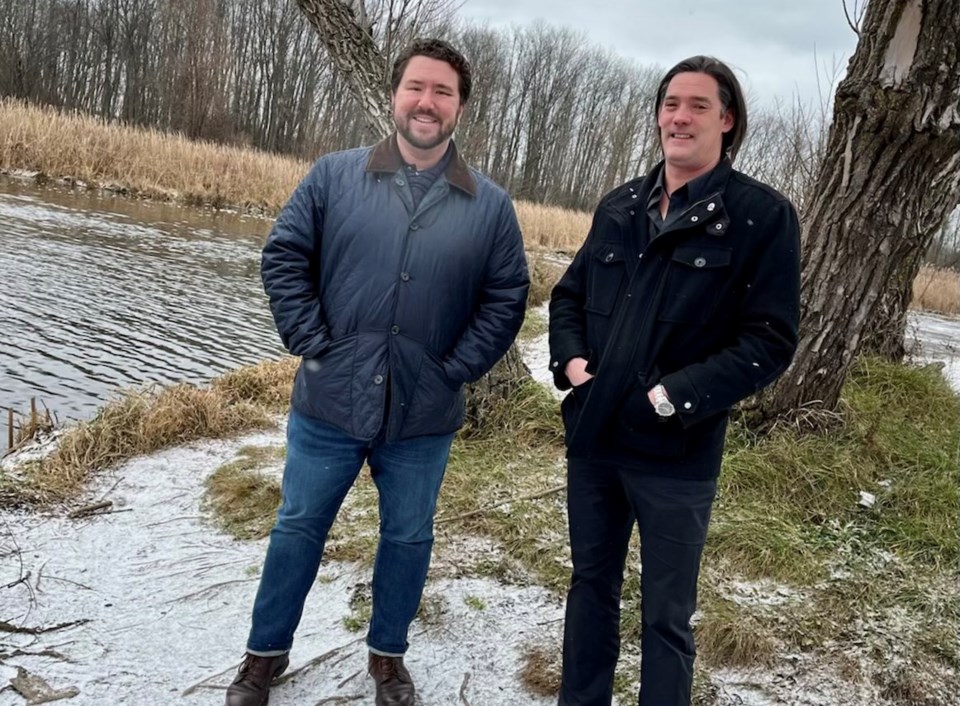BarrieToday welcomes letters to the editor at [email protected]. Please include your daytime phone number and address (for verification of authorship, not publication). The following letter is from Bradford Coun. Jonathan Scott and Georgina Coun. Dave Neeson regarding the proposed phosphorus recycling facility.
*************************
Over the fall season, you may have read about our efforts as municipalities across our regions to deliver a proposed “phosphorus recycling facility." We want to outline why this project is required, the history and where we go from here.
In 2009, the provincial government introduced its Lake Simcoe Protection Plan, a call to action to ensure the health and longevity of our watershed. A central goal of that strategy is to reduce phosphorus pollution in the lake down to just 44 tonnes a year.
Instead, phosphorus pollution has continued to increase.
Phosphorus is a naturally occurring nutrient, but at excess amounts, it fertilizers aquatic plant life, like algae, which drowns off sunlight and oxygen in the lake and rivers, threatening fish habitats and diluting water quality.
For a number of years, there’s been an idea to try to filter out this excess phosphorus from the watershed. Farmers have actually done an excellent job reducing any runoff from agricultural activities. But, given the typography of our region, a lot of phosphorus flows into the Holland Marsh basin. There, we already have pumping systems in place to manage the canals through the drainage scheme.
At the same time, York Region had a stalled proposal to build a sewage treatment plant that would discharge treated effluent into the Lake. For a variety of reasons, this project was not approved by the previous provincial Liberal government.
When Premier Doug Ford and the Conservatives were elected, York Region thought they might be able to repackage their project and get it approved. To make the project more attractive, they included a $40-million proposal to build the phosphorus recycling facility in the Marsh, as an environmental offset to their overall Upper York Sewage scheme.
Despite this, the Ford government indefinitely paused the Upper York project this autumn as their government’s first legislative priority, given environmental concerns with the proposal.
So, we both met in August in Jackson’s Point to try to find a way to push the beneficial recycling facility forward, notwithstanding the overall status of the Upper York scheme.
We had extensive discussions with officials in Ottawa, at Queen’s Park and staff at York Region, as well as mayors, councillors, MPs and MPPs. A wide variety of stakeholder groups, some who don’t agree on other matters, also came together to support the project: Lake Simcoe Watch, Rescue Lake Simcoe Coalition, the Holland Marsh Growers’ Association, Liberal and Conservative MPs, the provincial Green Party leader.
We prepared a motion that clearly laid out what we are seeking: the phosphorus recycling facility delivered, with help from all levels of government working collaboratively.
That motion (or a substantively similar version) has now been passed by the following watershed municipalities: Barrie, Brock, Bradford West Gwillimbury, Innisfil, Georgina, East Gwillimbury, King Township, Ramara. As Georgina Mayor Margaret Quirk has said, this represents unprecedented unity amongst area municipalities.
So what happens next?
If we do not deliver this phosphorus recycling facility, the problem will only get worse as our region continues to grow, even if we are able to enact our smart growth goals to stop suburban sprawl in favour of the more affordable and sustainable kind of intensification we need, especially near transit hubs.
As of today, we’ve had productive meetings with the province, through our MPP and Environment Minister Dave Piccini, and are optimistic they will help us deliver this facility to protect Lake Simcoe.
The federal government has confirmed they are committed to delivering the project and their pledge is to fund up to $16 million, roughly 40 per cent of the cost to build the $40 million facility.
That leaves a $24-million or so gap, one we are optimistic all levels of government working collaboratively will be able to close. If we can get agreement in principle on the funding, a proponent — whether York Region or another local entity — should then begin an environmental assessment and detailed design of the facility.
Since 2009, we have all operated under a Lake Simcoe Protection Plan that calls for phosphorus to be reduced to 44 tonnes only. This facility will remove between 2.5 to 11 tonnes per year from the watershed. It is not the whole solution, but it is the single largest reduction in phosphorus ever proposed, and if there is political will, it can happen — and soon.
As Claire Malcolmson of the Rescue Lake Simcoe Coalition said: “We have to do it.”
How’s that for an early New Year’s Resolution?
Dave Neeson, Georgina
Jonathan Scott, Bradford West Gwillimbury
*************************



